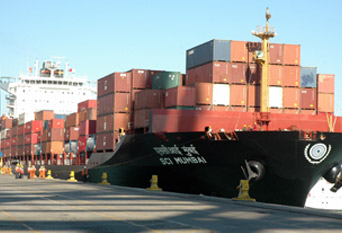India has intensified its monitoring of imports from China to guard against a potential flood of cheap goods into its market, following the United States’ dramatic tariff escalation on Chinese exports.
The U.S. hike—part of a sweeping trade overhaul unveiled by former President Donald Trump—has raised tariffs on Chinese goods by an additional 34 per cent, taking the total duty to 54 per cent. The move has significantly narrowed China’s access to the world’s largest consumer market, prompting concerns that surplus goods may be diverted to other major economies, including India, at dumped prices.
Commerce Secretary Sunil Barthwal has reportedly convened several high-level meetings to assess the situation. “We are actively engaging with industry stakeholders to get a comprehensive understanding of potential risks and are developing a strategic response,” a senior government official told IANS.
The Commerce Ministry has already been vigilant in sectors such as steel, where earlier U.S. tariffs had led to a surge in Chinese exports to other countries. Officials have now expanded the scope of surveillance to electronics, textiles, chemicals, and other sensitive sectors that could be vulnerable to dumping.
China’s Potential Redirection of Exports
With Chinese exporters now facing steep barriers in the U.S., Indian authorities fear that Beijing may attempt to offload its excess inventory at artificially low prices to maintain factory output—an act considered dumping under global trade norms.
“This is a classic case where trade diversion could lead to market distortions. We must ensure that Chinese overcapacity does not destabilize Indian industries,” the official said.
China, meanwhile, has retaliated against the U.S. tariffs with countermeasures including 34 per cent duties on all American goods, restrictions on rare earth metal exports, and sanctions on select U.S. defence-related companies.
India’s own exports to the U.S. account for only 4 per cent of its GDP, and the new 27 per cent U.S. tariff on Indian goods is expected to have a “limited impact,” according to an SBI Research report. In fact, the relatively lower tariff rate on Indian goods—compared to 34 per cent on China, 36 per cent on Thailand, and 46 per cent on Vietnam—may boost India’s long-term competitiveness in global markets.
The report noted that in electronics, where China now faces U.S. tariffs ranging from 54 per cent to 79 per cent, India could emerge as a preferred export partner. India shipped $9 billion worth of electronics to the U.S. between April and December in FY25, making it the country’s top export sector to the U.S.
However, short-term challenges remain, especially in textiles, where higher tariffs on competitors like Bangladesh, China, and Vietnam could initially lead to demand compression. India exported $7 billion worth of textiles to the U.S. in the same period, and while the sector may experience a temporary setback, experts believe it stands to gain in the medium to long term.
As global trade dynamics shift rapidly, India’s proactive stance underscores the need to protect domestic industries from unfair competition. Government agencies are expected to increase customs checks, evaluate import pricing patterns, and, if needed, initiate anti-dumping investigations.
Industry bodies have welcomed the government’s vigilance, emphasizing the importance of balancing open trade with protective mechanisms. “We support global trade but not at the cost of India’s manufacturing ecosystem,” said a representative from a leading industry federation.
As China recalibrates its export strategies under growing global pressure, India remains on high alert—not just to shield its markets, but potentially to seize emerging trade opportunities.



